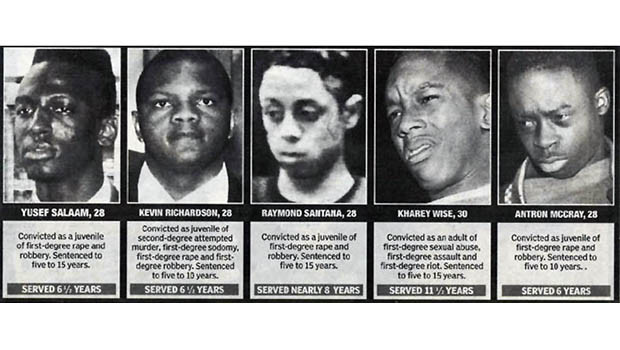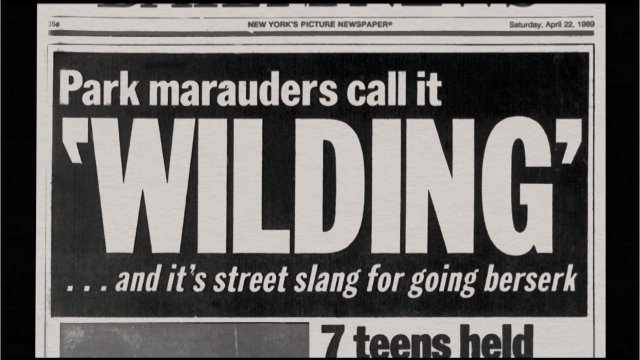What makes “Central Park Five” unique in the Ken Burns filmography?
Quick Answer: While Ken Burns has made plenty of documentaries about the more distant past, The Central Park Five is Burns’ first documentary about an event in modern American history. The famous documentarian’s previous works deal with people, places and events prior to 1950. The more recent subject matter gives the film a powerful relevance and a stronger stance, in contrast to Burns’ typical style of leaving viewers to draw their own opinions. His daughter Sarah Burns and son-in-law David McMahon co-wrote and co-directed the film, which they conceived after Sarah clerked in the office of an attorney for a member of the “Central Park Five” in a civil lawsuit against New York City.
The Central Park Five (2012) is a documentary written and directed by Ken Burns, Sarah Burns and David McMahon, focusing on the conviction of five teenagers for the 1989 rape and brutal assault of woman jogging in Central Park. The film tells the story of how racism and class issues divided a city and encouraged Americans to wrongfully assume the guilt of five innocent teenagers.
The Sundance Documentary Club currently features a “Spotlight on Ken Burns,” a collection of many of his award winning documentaries, including The Central Park Five, which is a necessary addition to any collection of Ken Burn’s best work. In many ways the film is classic Burns, while several important aspects of the case allow him and the other filmmakers to expand on his usual style. Burns is known for showing us American history through his lens. This documentary, however, gives Burns a chance to examine a modern event and hold a mirror up to his viewers.
On the night of April 19, 1989, a large group of teenagers were reported to be attacking people and vandalizing in several areas in Central Park. Several of these teens were caught and in police custody when the female victim was found early the next morning and rushed to the hospital in critical condition. Within 24 hours of being held in police custody, each of the five confessed and implicated the others in the attack. The collected physical and DNA evidence was not tied to any of the five accused, but their taped confessions were the key to their eventual convictions.
The attack became one of the most notorious crimes of the 1980s. The case slowly faded from the headlines while the teens served their respective prison and juvenile detention sentences — until 2002, when Matias Reyes admitted he was the sole attacker in the crime. The DNA found at the scene confirmed Reyes raped the victim. Reyes was not charged or tried for the rape because the statute of limitations had expired. However, this revelation reversed the convictions and erased the sexual offender status of the five wrongfully convicted teens. The documentary is first time the Central Park Five share their story, starting from the night of the attack through to the aftermath of Reyes’ confession.
Perhaps due to the influence of his co-writers and co-directors, Burns’ daughter and son-in-law, Burns also for the first time focuses on a major crime in US history. Sarah Burns gained interest in the case and defendants after clerking at the law firm of an attorney representing one of the “Central Park Five” in his civil suit against New York City for the wrongful conviction and imprisonment. Sarah Burns became so enthralled with the case and the five men who spent decades paying for a crime they didn’t commit that she published a book on the case in 2011, and this book became the initial script for the film. These facts explain why Ken Burns chose to document this case. However, this particular case had additional impacts on the film and his distinctive style.
.jpg)
Burns is known for creating historically accurate documentaries that share an exhaustive collection of insights and facts that serve to represent a thorough, research-based narrative. This film is no exception in form; Burns uses archival footage and interviews with the defendants as well as journalists and others related to the case. The case works well with Burns’ distinctive filmmaking choices because, now that the public has all the facts, the story can be told from beginning to end with all necessary information to confirm the narrative. The Burns family provides comprehensive coverage of the attack, the trial and the aftermath of Reyes’ confession in 2002. But the greatest impact of the film lies in the firsthand stories of the five wrongfully convicted teens, now men, who finally share their story and provide faces to this grave miscarriage of justice. The film also pushed the City of New York to settle the civil lawsuits of the five wrongfully convicted teens, 11 years after they were filed.

The film opens with Reyes’ taped confession from 2002, and this scene informs viewers from the beginning they are not watching a typical Burns documentary. Burns’ previous films typically provide viewers with all the facts about the subject, so that they have a better understanding to form their own opinions about the topic at hand. This film opens with a starkly different feel to his other catalogue: the viewer will still be given all the facts of the case, but they know from the beginning that everything they thought they knew about the Central Park Jogger case is wrong.
Sarah Burns’ involvement with the civil case may affect the different feel of the narrative, which highlights the tragic ripples still harming the lives of the convicts even after the true attacker confesses. The filmmakers want to make the audience aware that the 2002 confession cannot undo all the damage done by the coerced confessions and unjust convictions of the five scared, confused teenagers who had their lives and freedom stolen from them.
Burns often focuses on major historical events and figures but tends to choose subjects occuring prior to 1950. One theme in his documentaries is how particular events can capture the spirit of an era in history, and this film does not deviate, although the era highlighted feels closer to our current time and our lasting problems. One of the most notorious crimes of the 1980s, the Central Park Jogger case became a national sensation. The film exposes the cultural and social undercurrents that made this crime of such interest to not only New Yorkers but also to the nation and led to the teens’ quick conviction in the court of public opinion.
Central Park Five explores an especially dark chapter in American History, exposing the major role race and class played in the crime. The film feels perhaps darker than some of Burns’ other topics, if primarily because the problems it exposes are still at the forefront of today’s US society. At one point, Burn’s features several other major crimes that happened in New York City close to the jogger’s rape that were largely ignored, while this case garnered attention because it sensationalized a white, middle class woman being attacked by a group of black, teenage males. The film also discusses how the case affected the mayoral race and sparked public debates on reestablishing the death penalty in New York. The attack and trial were incredibly polarizing in New York City as well as the nation, and the lines were drawn based on race and class. The documentary does not leave the facts open for viewers to form an opinion, in Burns’ typical style, but instead chillingly and firmly exposes how racism impacts our modern world and American society.

Instead of allowing the audience to form an open opinion from facts that invite multiple interpretations, here Burns and the other filmmakers send a message, holding up a mirror to show us that we have not truly progressed as much as we like to believe. As a fan, I hope that Burns continues on this path. America needs mirrors now more than ever.

